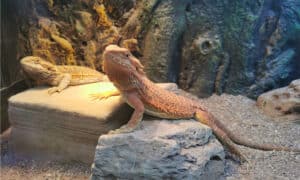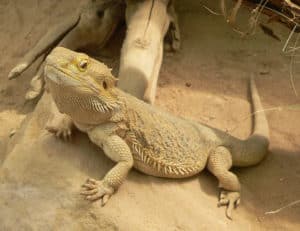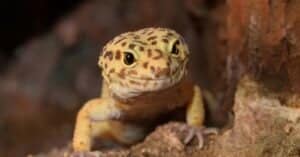| Best for | Product |
|---|---|
| Best Overall | Exo Terra Heat Wave Rock, Ul Listed Large |
| Best For Safety | Zoo Med Repticare Rock Heater Mini Size |
| Best For Temperature Control | AIICIOO Reptile Heat Rock |
| Best For Affordability | Fiada Reptile Heating Rock |
| Best For Underground Reptiles | Fluker’s 28000 Small Hot Rock for Reptiles |
All living organisms, including reptiles, require adequate heat. Heat is generated in many different ways. However, it’s important for vital biological functions such as reproduction, circulation, digestion, breathing, and waste removal.
Mammals are endotherms because they’re able to produce their own internal heat. Reptiles and amphibians, on the other hand, are ectotherms because they draw heat from their surroundings. In the wild, nature sees to the provision of the appropriate heat, housing, light, and humidity. For instance, snakes and lizards employ sunning to generate heat. They seek out a sunny area where they can soak up the heat. Rocks or other surfaces that are warm also radiate heat. They seek shelter, go underground, or expose themselves to the breeze whenever they need to cool off. Snakes and lizards also experience a form of hibernation known as brumation. During colder weather, their metabolism is severely slowed down.
Reptiles lose these natural advantages when kept as pets. Thus, it’s important for every responsible pet reptile owner to replicate the temperature gradient of their natural habitat.
Is this the point where we mention that pet reptile care is completely different from the care regimen of dogs and cats? Reptiles need particular heat, humidity, and lighting conditions to survive. Before taking a pet reptile or amphibian home, be sure to learn about the specific species’ natural habitat, temperature, and light needs. This enables you to set up their new habitat and maintenance routine, as appropriate.
Different species have varying heat needs. Desert and tropical reptiles, including well-known pets like bearded dragons, leopard geckos, as well as anoles, green iguanas, and Chinese water dragons, require more warmth than their temperate counterparts such as skinks and corn snakes. All reptiles require a warm habitat, however, those from the desert and tropical regions thrive best in warmer temps than those from more temperate regions.
Depending on your pet’s needs, place a heat source on one end of the enclosure to raise the temperature there to the maximum permissible. The opposite end should be kept at a temperature that falls within the species’ lower temperature range. Be sure to position it at a side of the terrarium where your pet can’t come into direct contact, to avoid them getting burnt.
Keep in mind that nighttime in nature brings lower temperatures. The heating of their home should be adjusted so that the ambient temperature is lower at night. Obviously while keeping in the range of acceptable temperature for your reptile.
From heat rocks, and basking lights to heat lamps and cables, there’s a wide range of heating products available for your reptile’s enclosure.
When buried beneath the substrate, hot rocks are perfect for use as a secondary heat source. With many options available for different pet reptiles and amphibians, choosing the best heat rock for your pet can be stressful and confusing. We’ve answered all your questions with our well-researched list of the best heat rocks for your pet reptiles.
 Check Chewy
Check Chewy- Helps with thermoregulation in your pet reptile
- Made with a unique thermal conductive glue that allows for uniform distribution of heat
- Comes in three sizes
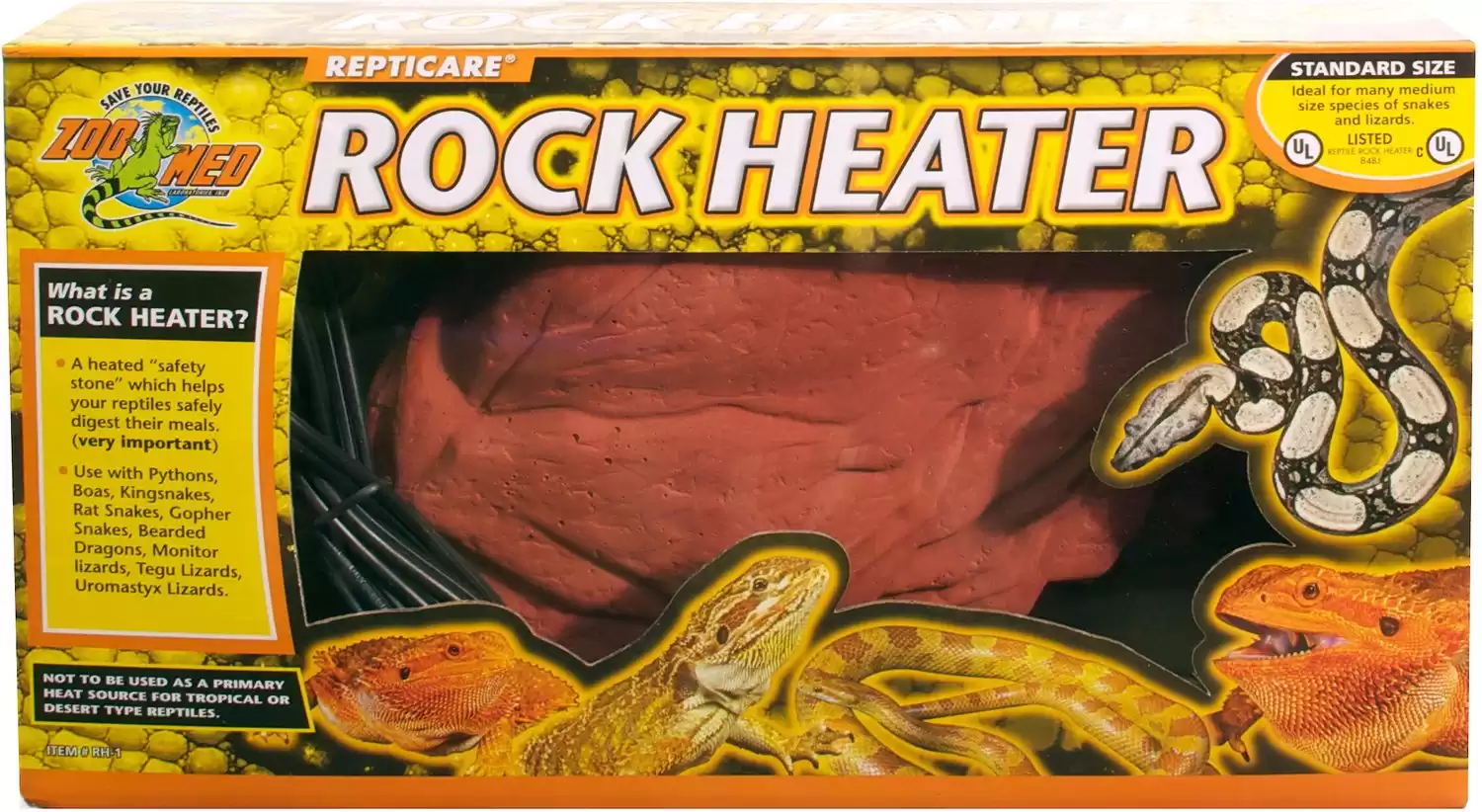 Check Chewy Check Amazon
Check Chewy Check Amazon- Safe for home use
- Distributes heat equally; no hot spots
- Suitable for several medium-sized species of snakes and lizards
- Made to be used as a secondary heater to aid reptiles in digesting food
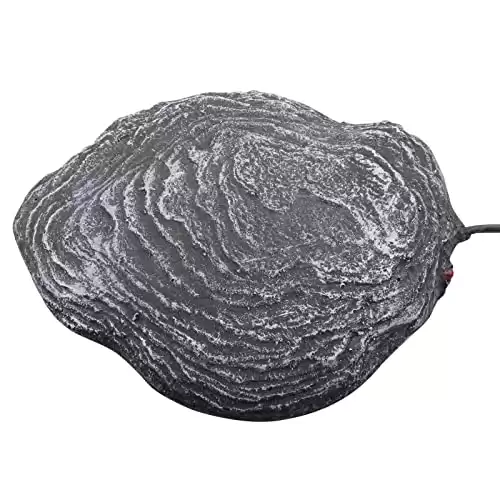 Check Amazon
Check Amazon- Turns off and stops heating when the rock's surface temperature rises too high
- Resin-based, washable surface
- Designed to facilitate your pet’s everyday activities as a result of increased appetite
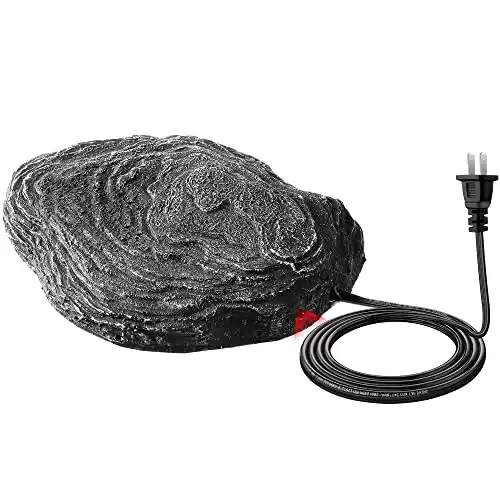 Check Amazon
Check Amazon- Provides comfortable heat and lasts a long time
- Smart constant temperature feature prevents it from falling below 70 degrees
- Keeps your pet warm
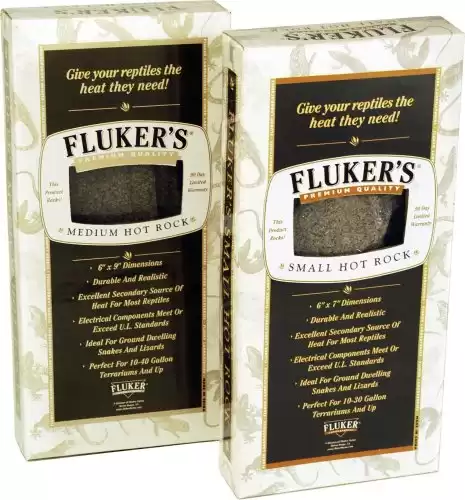 Check Amazon
Check Amazon- Medium-sized for medium-size pets
- Nonporous material makes for easy cleaning and maintenance
- Good secondary source of heat
A-Z-Animals’ Top Picks for the Best Heat Rocks
#1 Best Overall: Exo Terra Heat Wave Rock, Ul Listed Large
The Exo Terra Heat Wave Rock is our top pick for the best heat rock for pet reptiles and amphibians. This product simulate a stone heated by the sun. Therefore, it helps with thermoregulation, which is used by a variety of reptiles including nocturnal species. Thermoregulation helps to regulate body temperature, which is crucial for digestion and metabolism.
To avoid hot patches, the entire stone is covered by an electronically controlled heating element. It also turns off automatically when a specific surface temperature is reached to prevent overheating.
It is made with a unique thermal conductive glue that allows for uniform distribution of heat. The three sizes of the Exo Terra Reptile Heatwave, which have a natural look, may be easily incorporated into any humid or dry terrarium setup.
“I’ve been keeping beardies for 11 solid years. They’ve never suffered from burns because of its on/off feature,” a user said of the Exo Terra Heat Wave Rock. “It has also improved my pets’ digestive cycle.”
Several reviewers reported that their rock stopped working after a few months.
Pros and Cons of the Exo Terra Heat Wave Rock, Ul Listed Large
| Pros | Cons |
|---|---|
| This product simulates a stone heated by the sun to help with your cold-blooded pet’s thermoregulation. | Several reviewers reported that their rock stopped working after a few months. |
| The stone is covered with an electronically controlled heating element in order to avoid hot patches. | |
| In order to avoid overheating, it turns off automatically when a specific temperature is reached. | |
| It’s made with a thermal conductive glue that allows for uniform heat distribution. | |
| It’s available in three sizes, all of which have a natural look that will work in humid or dry terrariums. |
- Helps with thermoregulation in your pet reptile
- Made with a unique thermal conductive glue that allows for uniform distribution of heat
- Comes in three sizes
2. Best For Safety: Zoo Med Repticare Rock Heater Mini Size
Perhaps the unique selling point of the Zoo Med Repticare Rock Heater is that it’s cUL approved for safety. This means it’s safe for home use.
This product is extremely robust and generates more heat for your herps because it is made of hydrated rock, a material that is twice as hard as cement or pumice. Hot spots are not an issue since the nichrome heater distributes heat uniformly due to its total immersion.
It is suitable for several medium-sized species of snakes and lizards, including bearded dragons, monitor lizards, tegus, rat snakes, gopher snakes, kingsnakes, and others. However, you might have a hard time cleaning it due to the porosity.
Keep in mind that a heat rock should never be the only source of heat in your pet’s enclosure because it was made to be used as a secondary heater to aid reptiles in digesting food.
One reviewer bought this last two months for his pet snake. According to him, the pet seems pleased, and it has been satisfying to see the comfortable warmth it gets from the Zoo Med Repticare Rock Heater.
A sole reviewer was distressed because the product had a 5′ cord, not a 9′ cord as indicated in the product description. A few reviewers reported that their rocks didn’t get warm enough, while others said that theirs developed hot spots. We recommend that you study reviews for any pet product in order to make the most informed decision possible.
Pros and Cons of the Zoo Med Repticare Rock Heater Mini Size
| Pros | Cons |
|---|---|
| This rock heater is cUL approved for safety, which means that it’s safe for home use. | A sole reviewer reported that the product had a 5′ cord, not a 9′ cord as indicated in the product description. |
| This product is made of hydrated rock, which is twice as hard as cement or pumice. | A few reviewers reported that their rocks didn’t get warm enough, while others said that theirs developed hot spots. |
| The nichrome heater distributed heat uniformly due to its total immersion, so hot spots are not an issue. |
- Safe for home use
- Distributes heat equally; no hot spots
- Suitable for several medium-sized species of snakes and lizards
- Made to be used as a secondary heater to aid reptiles in digesting food
3. Best For Temperature Control: AIICIOO Reptile Heat Rock
The AIICIOO Reptile Heat Rock is suited as a secondary heater for a wide range of reptile, amphibian, and arachnid species, including snake, lizard, gecko, bearded dragon, chameleon, iguana, turtle, and tortoise in the desert and tropical environments. It’s equally great for reptiles such as pythons, boas, monitor lizards, and tegus.
With its innovative temperature control function, the reptile heating rock turns off and stops heating when the rock’s surface temperature rises too high. The AIICIOO heat rock is designed to facilitate your pet’s everyday activities as a result of increased appetite.
It features a resin-based, washable surface, and uniform heat dissipation to keep your pet warm without hurting them and interfering with their sleep cycles. However, you might want to look out for its power indicator light that beams a bright red color at night while the heat rock is in use because it could be a disturbance to you.
According to one user, they love this product because it works great for their ball python. “Although I use it with a seedling heating mat, it works with many other heat mats,” they noted.
Some reviewers reported that their heat rock didn’t turn on or only worked for a brief period.
Pros and Cons of the AIICIOO Reptile Heat Rock
| Pros | Cons |
|---|---|
| This heated rock is best suited as a secondary heater for a wide variety of reptiles, amphibians, and arachnids. | The power indicator light beams bright red at night while the heat rock is in use, which may disturb you. |
| The rock turns off automatically when its surface temperature rises too high. | Some reviewers reported that their heat rock didn’t turn on or only worked for a brief period. |
| It features a resin-based, washable surface, and uniform heat dissipation to keep your pet warm without burning them or interfering with their sleep cycle. |
- Turns off and stops heating when the rock's surface temperature rises too high
- Resin-based, washable surface
- Designed to facilitate your pet’s everyday activities as a result of increased appetite
4. Best For Affordability: Fiada Reptile Heating Rock
Like other products on the list, the affordable Fiada Reptile Heating Rock keeps your pet reptiles or amphibians warm. With its 7.1 x 5.2 x 1.2 inches, 12W, 110V, and 4.9-foot power wire, this product provides comfortable heat and lasts a long time for amphibians, reptiles, and other creatures in desert and tropical terrariums.
When the temperature of the reptile heating rock (rather than the air temperature), which is equipped with a smart constant temperature feature, falls below 70°F, it automatically begins to heat up. It stops heating when the temperature reaches 113°F.
“I’m excited I got round to making this purchase. It turned out to be a great buy because my lizard loves it,” one user stated.
Some reviewers reported that they received a broken heating rock or that it broke shortly after purchase.
Pros and Cons of the Fiada Reptile Heating Rock
| Pros | Cons |
|---|---|
| This affordable heating rock measures 7.1 x 5.2 x 1.2 inches, is 12W, 110V, and has a 4.9-foot power cord. | Some reviewers reported that they received a broken heating rock or that it broke shortly after purchase. |
| It provides comfortable heat and lasts a long time in desert or tropical terrariums. | |
| When the temperature of the reptile heating rock (as opposed to the air temperature) falls below 70°F, it automatically begins to heat up. It stops heating when the temperature reaches 113°F. |
- Provides comfortable heat and lasts a long time
- Smart constant temperature feature prevents it from falling below 70 degrees
- Keeps your pet warm
5. Best for Underground Reptiles: Fluker’s 28000 Small Hot Rock for Reptiles
The Flucker’s 28000 Small Hot Rock also comes in a medium size, depending on your pet’s needs. While this product is perfect for underground reptiles, it does a good job as a secondary source of heat for most reptiles without posing a risk of thermal burn or electric shock.
It’s made of a nonporous material, making it easy to clean and maintain.
The Fluker’s 28000 Small Hot Rock for Reptiles “keeps my iguana heated without being too hot to burn.”
Negative reviews included one stating that the rock didn’t meet the description size, one which said that the rock got too hot, and one that claimed that it didn’t get hot enough.
Pros and Cons of the Fluker’s 28000 Small Hot Rock for Reptiles
| Pros | Cons |
|---|---|
| This rock is available in small and medium. | One reviewer said the rock didn’t match the description size. |
| It’s ideal for underground reptiles, but it also makes a good secondary heat source for most reptiles without posing a risk of thermal burn or electric shock. | One said that the rock got too hot. |
| It’s made of nonporous material, so it’s easy to clean and maintain. | Another said that the rock didn’t get hot enough. |
- Medium-sized for medium-size pets
- Nonporous material makes for easy cleaning and maintenance
- Good secondary source of heat
Choosing The Best: What To Look For
Your Pet’s Needs
Your priority should be to determine what the pet’s needs are and which heat rock is best positioned to meet those needs. For instance, desert reptiles such as bearded dragons need to be kept at significantly higher temperatures than species that live in temperate forests.
Budget
Money is at the core of your purchase decision. Make sure you decide on a realistic budget for the heat rock and go for products within your range.
Size of Enclosure
You can tell that most heat rocks come in sizes, ranging from small to large. This is because of the huge role enclosure size plays in pet reptile care routine. Choose a product that won’t overheat your terrarium, and check the product package to see if it fits your enclosure’s dimensions.
Verified Review: User Experience
A long-time user of the Exo Terra Heat Wave Rock gushes about the durability and effectiveness: “The large one of these has been in my possession for my box turtle for the past seven years, and both she and I adore it. It has been robust, reliable, and most importantly safe for her. I check the thermostat periodically, of course, but it hasn’t malfunctioned yet. The thermostat keeps it comfortable, but never too warm. My little broadhead skink loves the small one, and his fragile tummy spends the majority of the day on it.”
| Best for | Product |
|---|---|
| Best Overall | Exo Terra Heat Wave Rock, Ul Listed Large |
| Best For Safety | Zoo Med Repticare Rock Heater Mini Size |
| Best For Temperature Control | AIICIOO Reptile Heat Rock |
| Best For Affordability | Fiada Reptile Heating Rock |
| Best For Underground Reptiles | Fluker’s 28000 Small Hot Rock for Reptiles |
Thank you for reading! Have some feedback for us? Contact the AZ Animals editorial team.

